Electricals & electronics
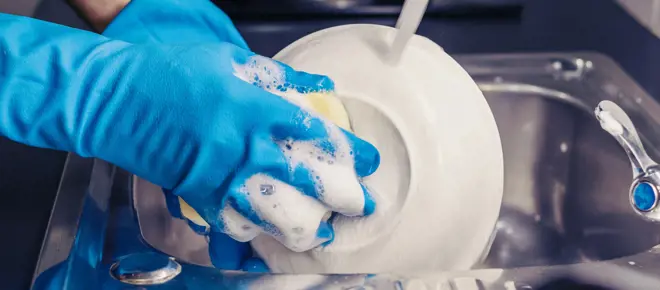
- Design & manufacturing
- Electricals & electronics
- Issue 100
The smart sensors enhancing safety
Manufacturers are increasingly digitising their supply chains to improve efficiency and quality, streamline processes and generally enhance their operations. For production of items such as food, household goods and healthcare products, digitisation is also improving safety. Jasmine Wragg spoke to engineers at the University of York and consumer goods company P&G about how sensors are helping to monitor bacterial contamination.

- Software & computer science
- Electricals & electronics
- Profiles
- Issue 100
Raspberry Pi: the chip that floated a thousand ideas
For Dr Eben Upton CBE FREng, floating the Raspberry Pi business on the London Stock Exchange is another step in a career that has straddled engineering and business.
Quick read

- Food & agriculture
- Electricals & electronics
- How does that work?
- Issue 100
How do air fryers work?
Air fryers have become immensely popular in recent years, promising a healthier and more energy efficient method of cooking that can save you money. They have also inspired numerous dedicated cookbooks and even a few TV programmes.
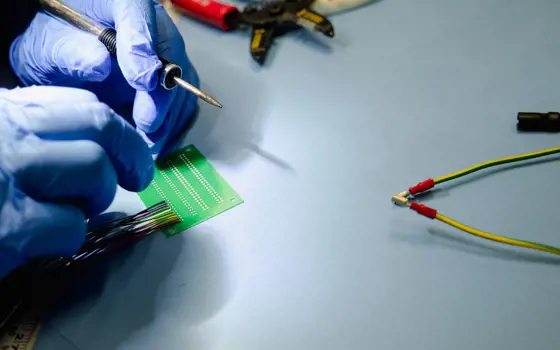
- Electricals & electronics
- Technology & robotics
- Issue 98
The secret world of national security tech
Attracting a new generation of the best engineering talent is at the heart of national security’s bid to stay ahead of rapid technological advances. His Majesty’s Government Communications Centre (HMGCC) explains more about how this is done.
Quick read
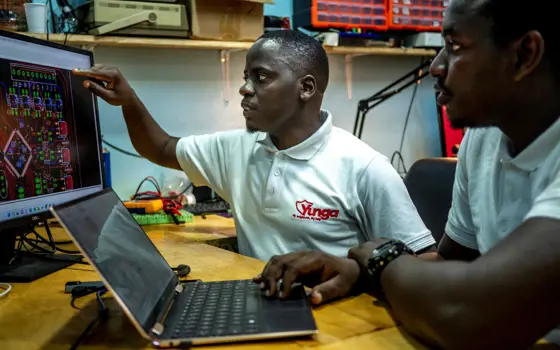
- Electricals & electronics
- Innovation Watch
- Issue 98
The community IoT network preventing break-ins in Uganda
After thieves broke into his home and stole $1,500 worth of valuables, Ugandan engineer Anatoli Kirigwajjo wanted to prevent it happening to others. He’s developed an Internet of Things-based security system that alerts neighbours.
Quick read
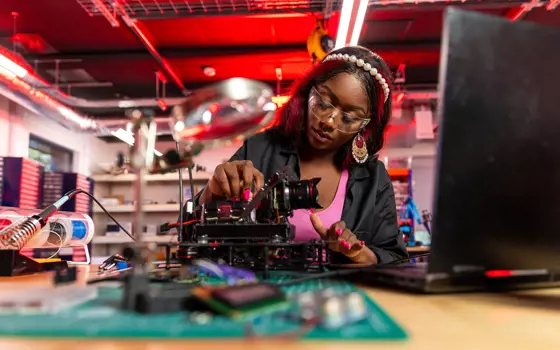
- Electricals & electronics
- Technology & robotics
- How I got here
- Issue 98
Q&A: Eneni Bambara-Abban, roboticist and technologist
Eneni Bambara-Abban got her start in engineering taking apart the toaster as a child. Today, her many roles include robotics engineer, technologist, and founder of The Techover Foundation, an NGO that supports underserved communities into technology.
Quick read
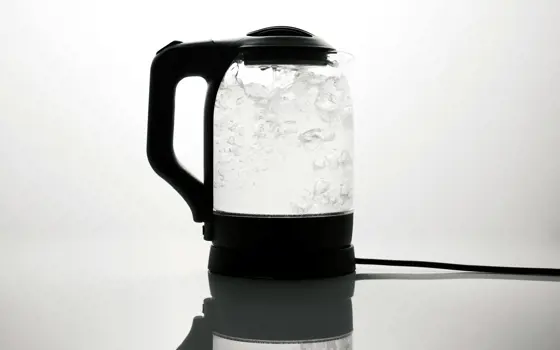
- Electricals & electronics
- How does that work?
- Issue 80
How do kettles know when to switch off?
Used every day by millions of people across the world, electric kettles use a surprisingly simple method to overcome a long-standing problem: how to switch themselves off.
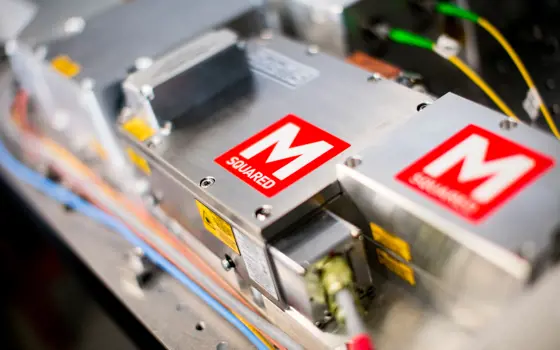
- Electricals & electronics
- Issue 81
Lasers to change the world
Enter any laboratory and there is a good chance that among their instruments, scientists will make regular use of a tunable solid-state laser from M Squared, using it for fundamental physics research. Born out of an academic research group, M Squared has collected many awards for its lasers.
Quick read
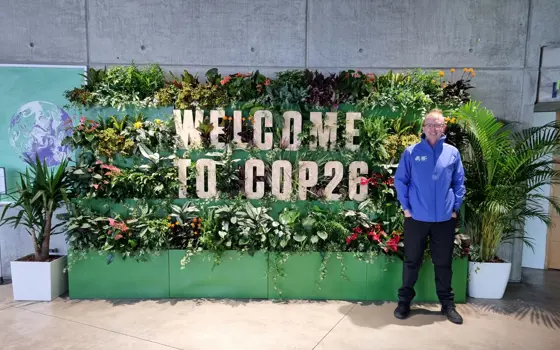
- Energy
- Environment & sustainability
- Electricals & electronics
- How I got here
Q&A: Mark Goudie, electrical engineer
Mark Goudie is one of the youngest engineering Fellows in the UK, an inventor, and an engineer in the energy sector.
Quick read
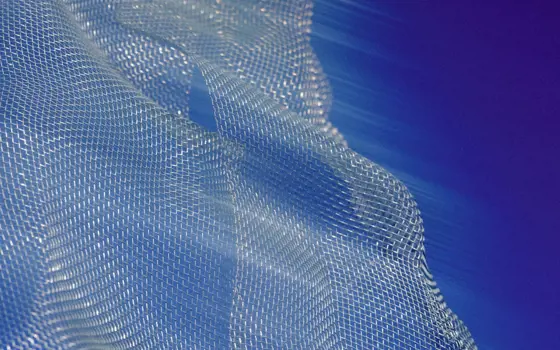
- Electricals & electronics
- Technology & robotics
- Opinion
- Issue 96
Securing the Internet of Everything
Our IoT devices need engineers to safeguard our privacy, say Oktay Cetinkaya and Peter Novitzky.
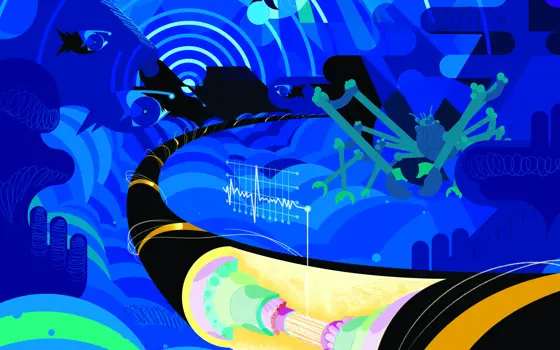
- Electricals & electronics
- Technology & robotics
- Issue 96
Undersea information sharing
Undersea cables transport vast amounts of data across the world – and even detect whales and earthquakes.
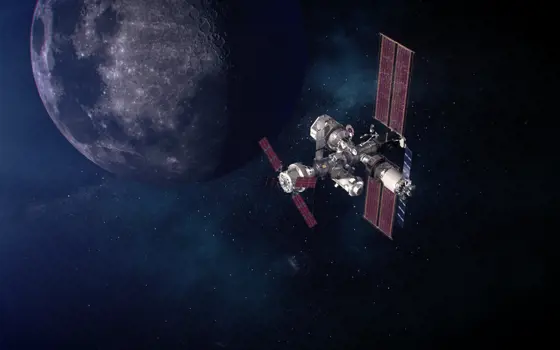
- Aerospace
- Electricals & electronics
- Issue 95
Lift-off for the UK's space industry
The UK has an impressive history in space and a now-thriving space sector, with three new spaceports on the way.
Quick read
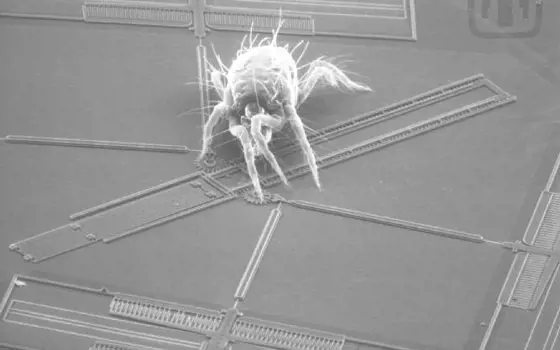
- Electricals & electronics
- Technology & robotics
- How does that work?
- Issue 94
Microelectromechanical systems (MEMS)
Microelectromechanical systems (MEMS) help to make many of our everyday items work, from Air Pods to airbags.
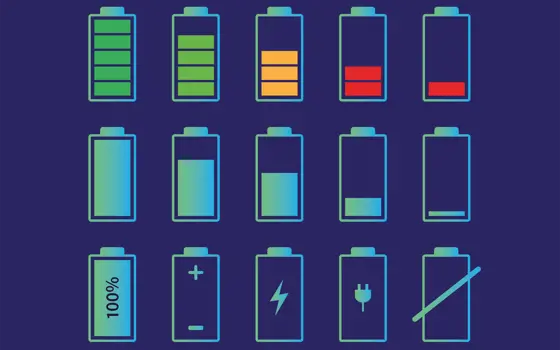
- Electricals & electronics
- Environment & sustainability
- Materials
- Issue 94
Powering the pursuit of net zero
It's electrifying: what’s needed before emerging battery technologies are fully charged for a clean green future?
Quick read

- Civil & structural
- Electricals & electronics
- Innovation Watch
The sensors making cities and structures smarter
UtterBerry’s matchbox-sized sensors form a network, akin to the human body’s sensory system, that provides early warning when maintenance might be needed or damage repaired.

- Aerospace
- Electricals & electronics
- Technology & robotics
- Issue 92
Why microseconds matter
Time’s time to shine: why is ultra-precise time so important for everything from bank transactions to public transport? The NPL’s Dr Leon Lobo explains all.
Quick read
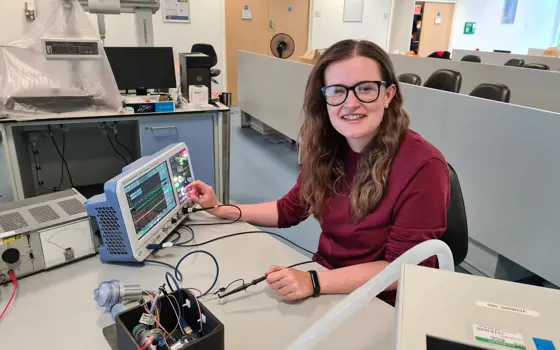
- Electricals & electronics
- How I got here
- Issue 91
Q&A: Jean Morris
A passion for physics led Jean Morris onto a graduate scheme at Airbus and a placement in Munich after University before her role as a research engineer at the National Physical Laboratory, where she won an award for pandemic service.
Quick read
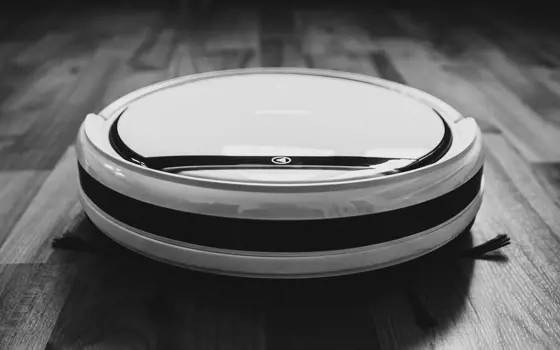
- Electricals & electronics
- Technology & robotics
- How does that work?
- Issue 90
Robotic vacuum cleaners
Twenty years after the Roomba's original release, the latest generation of robotic vacuum cleaners incorporate sophisticated machine vision technology to steer clear of electrical cables, stray socks and pet poo.
Quick read
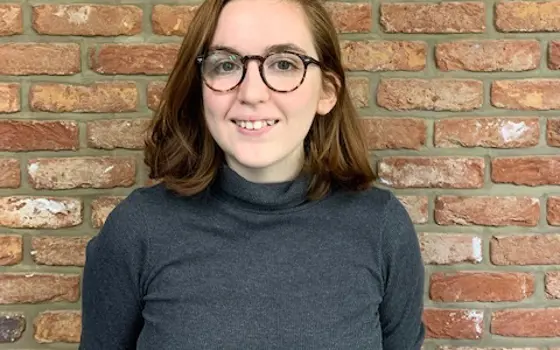
- Electricals & electronics
- Software & computer science
- Issue 90
Q&A: Rose Grey
Rose Grey is a higher software engineer at location services startup Focal Point Positioning (FocalPoint). She recently received an award from the Royal Institute of Navigation.

- Electricals & electronics
- Technology & robotics
- Profiles
- Issue 90
An innovator who fills a vacuum
From outer space to the depths of the earth, Professor Trevor Cross FREng seeks new uses of the technologies that enabled the electronic revolution.

- Aerospace
- Electricals & electronics
- Software & computer science
- Issue 90
Supercharging GPS precision
With the help of startup FocalPoint (headed up by ‘the real-life Q’), we examine the past, present and near-future of this integral technology.
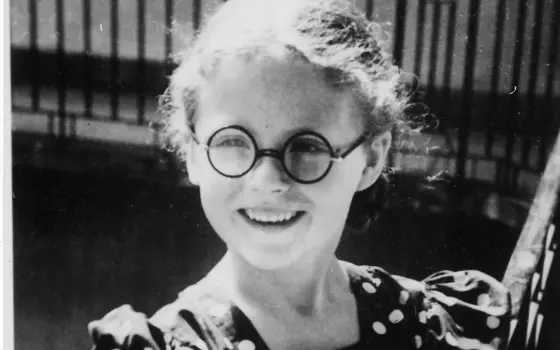
- Electricals & electronics
- Profiles
- Issue 88
The outsider who changed the system
As a Jewish Holocaust survivor, political refugee and woman in engineering, Dr Agnes Kaposi FREng has every reason to call herself an outsider. But it didn’t stop her from becoming the third woman ever to be elected as a Royal Academy of Engineering Fellow.
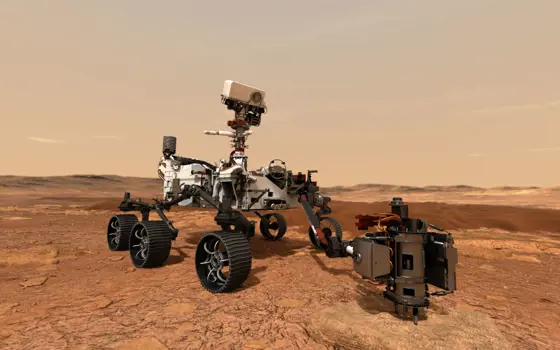
- Aerospace
- Electricals & electronics
- Issue 88
Why 1960s CCD technology is at the frontier of space exploration
In February 2021, NASA’s Perseverance rover landed on Mars, fitted with a suite of seven instruments designed to search for signs of past and present life. CCD technology was at the heart of two of these cutting-edge scientific devices.

- Environment & sustainability
- Electricals & electronics
- Issue 85
Charging into the future
The all-electric Jaguar I-PACE has collected many awards since it first left car showrooms in 2018, including its engineering team being recognised as MacRobert Award finalists. Find out about the challenges of developing the company's fist electric vehicle.
Quick read

- Electricals & electronics
- How does that work?
- Issue 83
Induction hobs
In an induction hob, a coil of copper wire is placed under a cooking pot and an alternating electric current passed through it. The resulting oscillating magnetic field wirelessly induces an electrical current in the pot, warming it up and cooking the food inside.
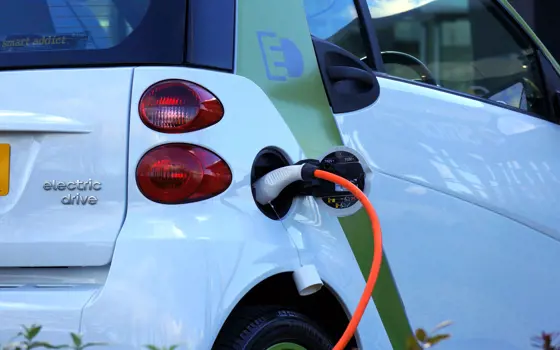
- Electricals & electronics
- Mechanical
- Issue 83
Replacing the batteries
Electrification of transport, the largest source of CO2, is a key part of the UK's approach to commit to net zero. The UK's Faraday Battery Challenge supports R&D at all stages of the electrification of transport, from new battery technologies through to disposal and recycling.
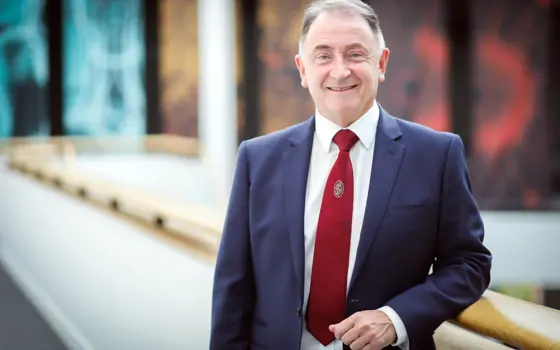
- Electricals & electronics
- Environment & sustainability
- Profiles
- Issue 82
Life in electrifying times
Professor Sir Jim McDonald FREng FRSE, elected President of the Royal Academy of Engineering, has worked as a transmission and distribution engineer. He joined the academic world when the electric industry was going through a business and technology revolution, becoming immersed in sustainable energy policy issues.
Quick read
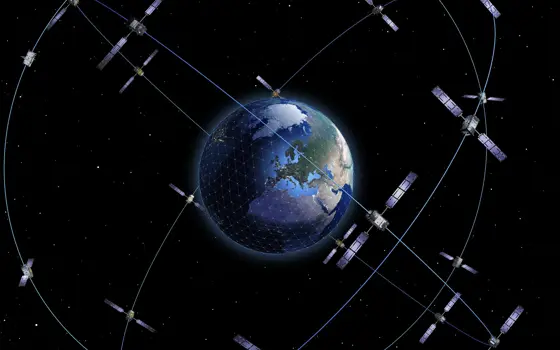
- Electricals & electronics
- Aerospace
- Technology & robotics
- How does that work?
- Issue 81
Global positioning system (GPS)
The global positioning system (GPS) enables anyone with a smartphone or navigation units on cars to pinpoint their location or tell the time. Initially developed for military use, it now has applications ranging from aviation safety and banking to rescuing ships in distress.
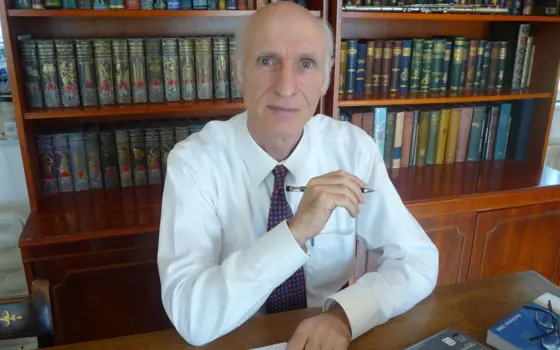
- Electricals & electronics
- Profiles
- Issue 81
A spectrum of generations games
Stepen Temple CBE FREng worked as an engineer within government to shape modern telecommunications and lay the foundation for today’s trillion-dollar global mobile industry. His career in the civil service has spanned the history of mobile telephony and he managed to recue 5G from a bureaucratic black hole.

- Technology & robotics
- Electricals & electronics
- Issue 79
Hollowing out a future in fibre optics
Optical fibres are used in many settings, from computer networks to broadcasting and medicine, to carry information. The fibres are usually made up of strands of glass, each one thinner than human hair, but researchers have been working on fibres to transmit data that contain just air.
Quick read
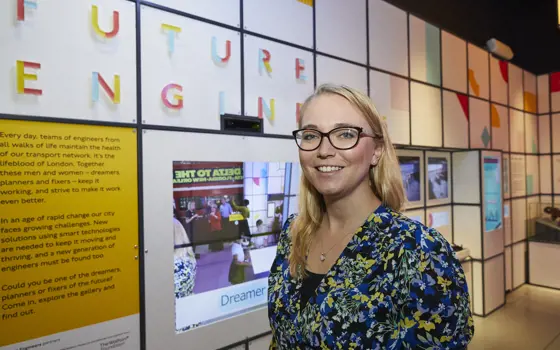
- Electricals & electronics
- Materials
- How I got here
- Issue 79
Q&A: Zoe Dobell
Zoe Dobell is a systems engineer at Transport for London (TfL). She’s currently working on the Central Line Improvement Programme (CLIP), where she is integrating new systems that are being retrofitted onto the trains.
Quick read
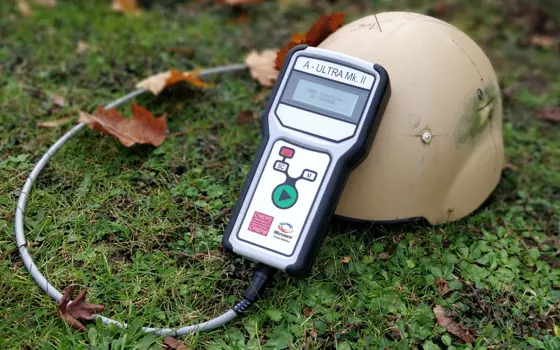
- Electricals & electronics
- Innovation Watch
- Issue 79
Ultrasonic armour inspection
A-Ultra is a portable device that uses sensors to check body armour for damage in just 10 seconds, saving time and money and making such inspections simple in even remote locations.
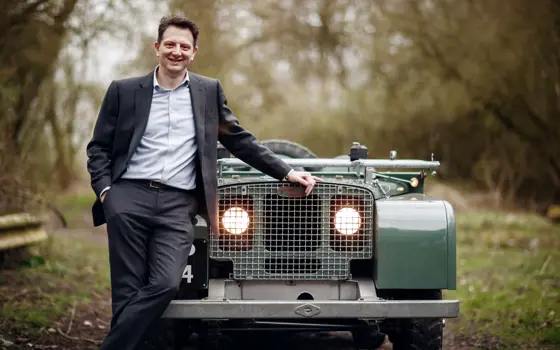
- Electricals & electronics
- Design & manufacturing
- Profiles
- Issue 79
Driven to an electrifying future
From apprentice to Executive Director of Product Engineering at Jaguar Land Rover, Nick Rogers FREng takes a special interest in young engineers. His career has included managing the transition to electric vehicles while simultaneously developing new car models.
Quick read

- Electricals & electronics
- How does that work?
- Issue 78
Beamforming
The next generation of cellular technology, 5G, is said to have ‘beamforming antennas’. What are these, how will they be used in mass-market cellular systems and why do they help increase both cell range and capacity?
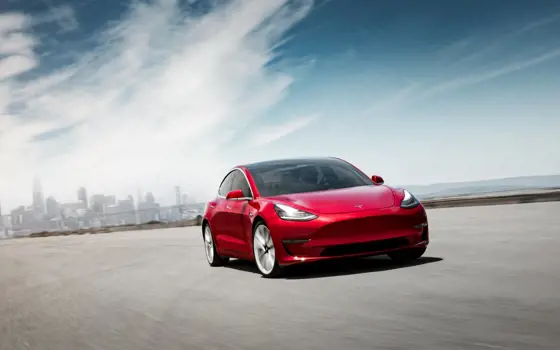
- Electricals & electronics
- Issue 78
The right climate for efficient semiconductors
Electrical energy is wasted in countless electrical circuits that increase or decrease voltages. A new generation of devices made from silicon carbide and gallium nitride, semiconductor materials with wider bandgaps, is reducing these losses and decreasing the carbon footprint of many electrical and electronic devices.
Quick read

- Arts & culture
- Electricals & electronics
- Innovation Watch
- Issue 77
A new way to make music
A team of engineers has developed a range of instruments that is changing the way people make music. ROLI combines digital technologies and pressure-sensitive silicone so that users can generate sounds with the lightest touch.
Quick read
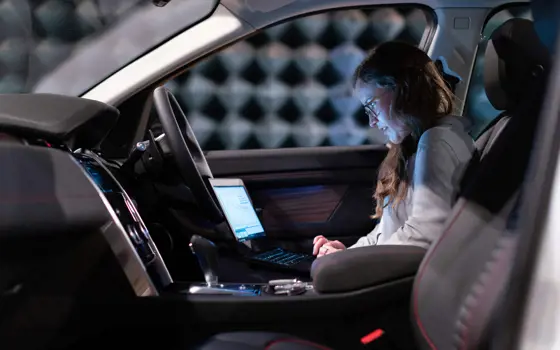
- Electricals & electronics
- How does that work?
- Issue 76
Driverless cars
Self-driving cars have been a science-fiction staple for decades, but a wide range of onboard sensors and sophisticated data-processing tools are now supporting trials on public roads around the world.
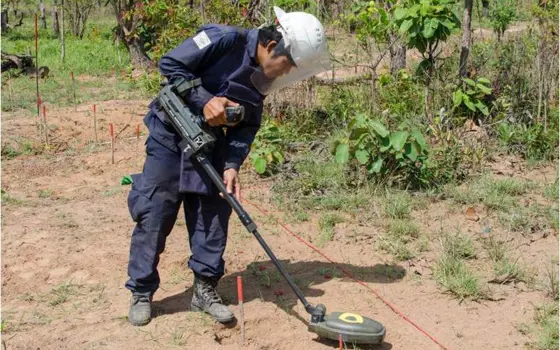
- Electricals & electronics
- Issue 75
Detecting landmines for a safer world
While the use of landmines has reduced over the last 20 years, they are still present in many countries as the result of actions such as civil wars and insurgencies. Cost-effectiveness and the appropriate technology are key to aid in humanitarian demining.
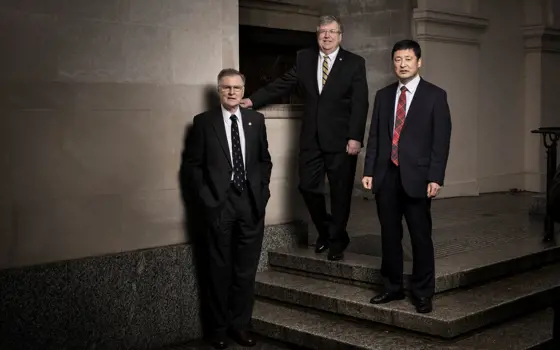
- Electricals & electronics
- Issue 73
Image revolutionaries
In February 2017, the four engineers responsible for the creation of digital imaging sensors were awarded the Queen Elizabeth Prize for Engineering. Find out about the development of the technology and how their contributions have revolutionised the way that visual information is captured and analysed.
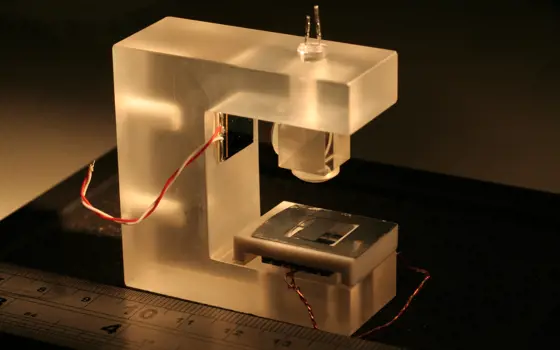
- Electricals & electronics
- Technology & robotics
- Innovation Watch
- Issue 73
The world's smallest gravimeter
Researchers at the University of Glasgow have adapted smartphone accelerometer technology to make the first small and affordable gravimeter, the Wee-g, able to detect tiny changes in gravity.

- Electricals & electronics
- How does that work?
- Issue 71
Radio spectrum
Radio spectrum is the part of the electromagnetic spectrum, a continuous range of wavelengths, that is widely used in modern technology. Particularly used in telecommunication, interest in the radio waves is expected to increase as 5G is rolled out and mobile communication is used more and more.
Quick read

- Electricals & electronics
- How I got here
- Issue 71
Q&A: Dr Sabesan Sithamparanathan
Dr Sabesan Sithamparanathan is Co-founder and CEO of PervasID. His company provides radio-frequency identification (RFID) readers for low-cost, long-distance sensing of passive RFID tags, for use in tracking in retail, security and healthcare.
Quick read

- Electricals & electronics
- Technology & robotics
- How does that work?
- Issue 70
Powerline networking
Most homes and businesses use wireless networks so powerline networking, which uses electrical wiring as a data network, may be considered a redundant technology. However, it’s a simple technology that complements wireless by reaching those areas that might be beyond a Wi-Fi network.
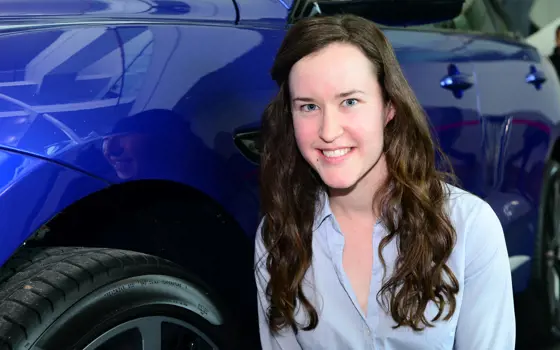
- Electricals & electronics
- How I got here
- Issue 70
Q&A: Orla Murphy
Orla Murphy is an audio engineer at Jaguar Land Rover. Her role focuses on optimising and improving the sound systems in the company’s vehicles, combining her passions for science, maths and music.

- Electricals & electronics
- How does that work?
- Issue 69
Lithium-ion batteries
Li-ion batteries have revolutionised modern life, through their application in consumer electronics and applications as diverse as medical implants, grid-scale storage and satellites. Recent concerns have fuelled public concern about battery safety. So how do these cells work, and what can go wrong?
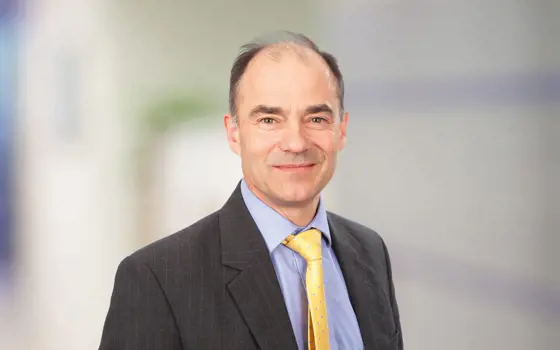
- Mechanical
- Electricals & electronics
- Profiles
- Issue 69
Taking engineering to industry
Becoming CEO of Rolls-Royce has taken Warren East CBE FREng from electronic chips to jet engines. This change in industries isn’t as dramatic as it might seem as, after all, they both operate at the cutting edge of engineering.
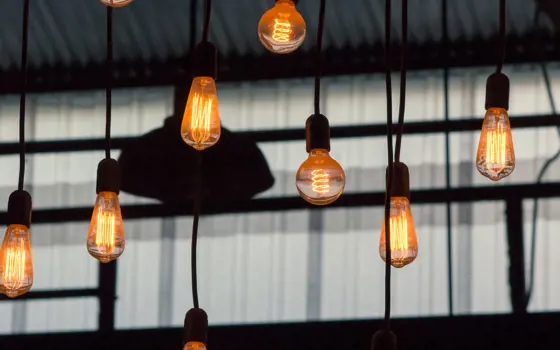
- Electricals & electronics
- How does that work?
- Issue 67
Li-Fi
Li-Fi technology is a wireless communications technology that harnesses LED lights to transmit data at high speeds. Find out how semiconductor light sources can be used to stream web, video or audio and the advantages it has over Wi-Fi.

- Electricals & electronics
- Sports & leisure
- How does that work?
- Issue 66
Noise-cancelling headphones
Used by plane and train passengers wanting to listen to radio, music or film without hearing background noises, active noise-cancelling (ANC) headphones are able to prevent outside noise from leaking through to the inside of headphones.
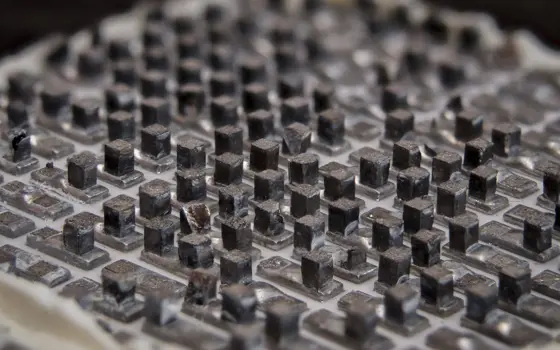
- Electricals & electronics
- How does that work?
- Issue 65
Peltier devices
First discovered by Jean Charles Peltier, the Peltier effect is used across a range of devices, from thermoelectric heaters and coolers to sensors and spacecraft. Find out how the use of semiconductor materials can act to manage heat transfer.

- Electricals & electronics
- Mechanical
- Issue 64
High speed evolution
In December 2010, Eurostar International Ltd awarded a contract for 10 new high speed trains to Siemens. The company has used a system developed over decades to maximise the performance and passenger-carrying ability of its 320km/h trains.

- Electricals & electronics
- Innovation Watch
- Issue 63
Cable fault locator
The winner of the Institute of Engineering and Technology’s 2014 Innovation Award was EA Technology’s CableSnifferTM, which uses a probe and chemical sensing technology to identify faults, saving energy companies millions of pounds each year.
Quick read
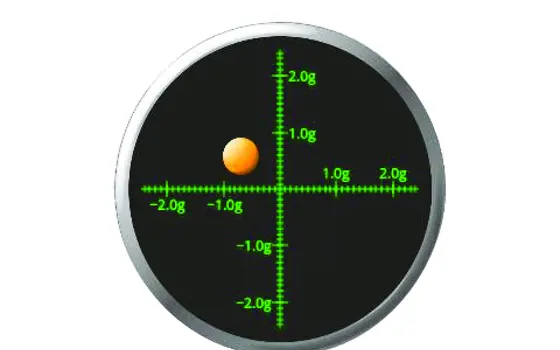
- Electricals & electronics
- How does that work?
- Issue 62
Accelerometers
Used in earthquake measurements, laptops, planes and even in stargazing apps, today’s accelerometers are much smaller than when they were first developed in 1927. Find out how they detect movement and vibration.

- Arts & culture
- Electricals & electronics
- Issue 62
How to maximise loudspeaker quality
Ingenia asked Dr Jack Oclee-Brown, Head of Acoustics at KEF Audio, to outline the considerations that audio engineers need to make when developing high-quality speakers.